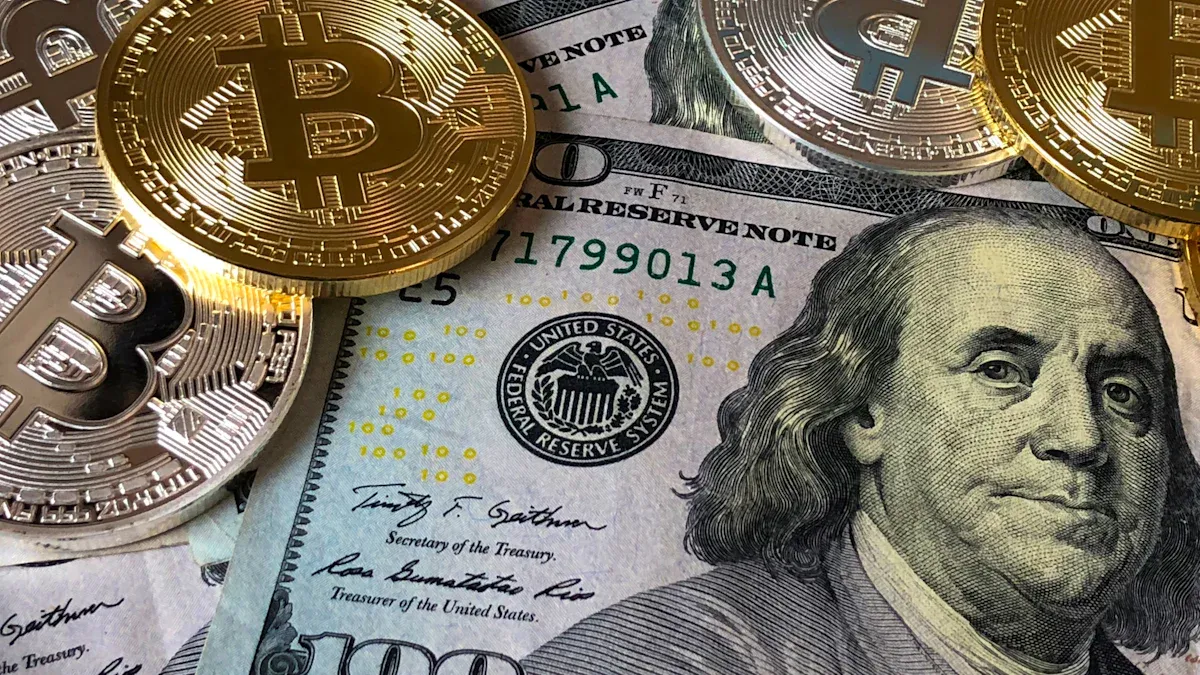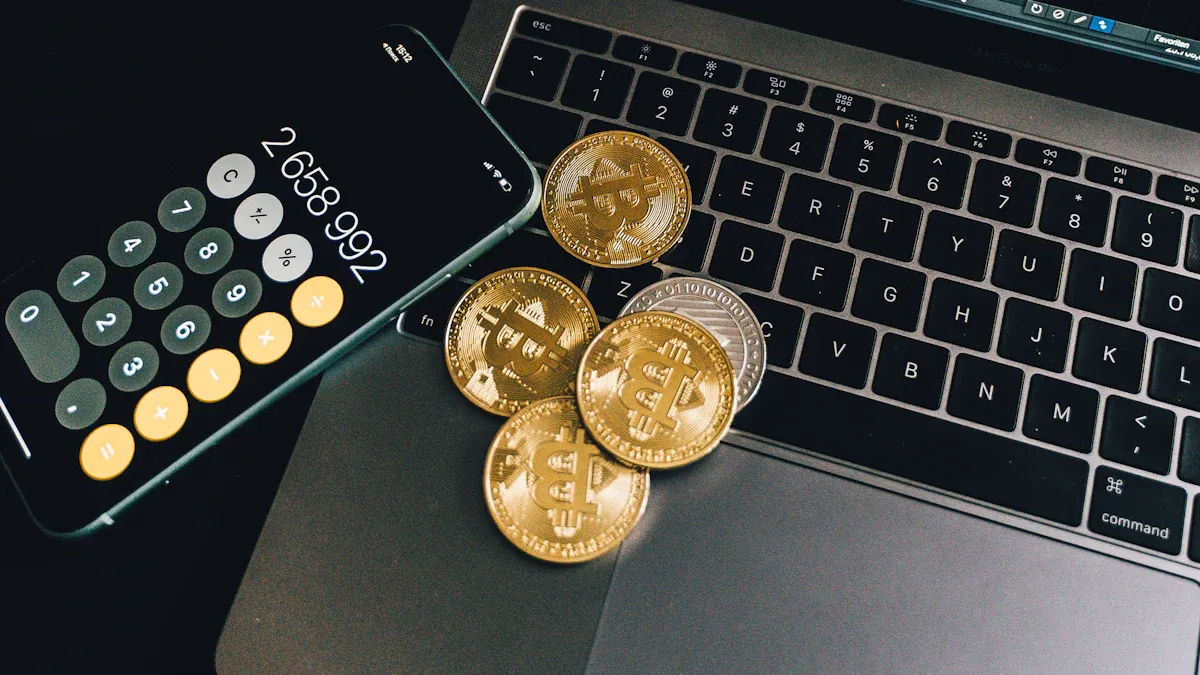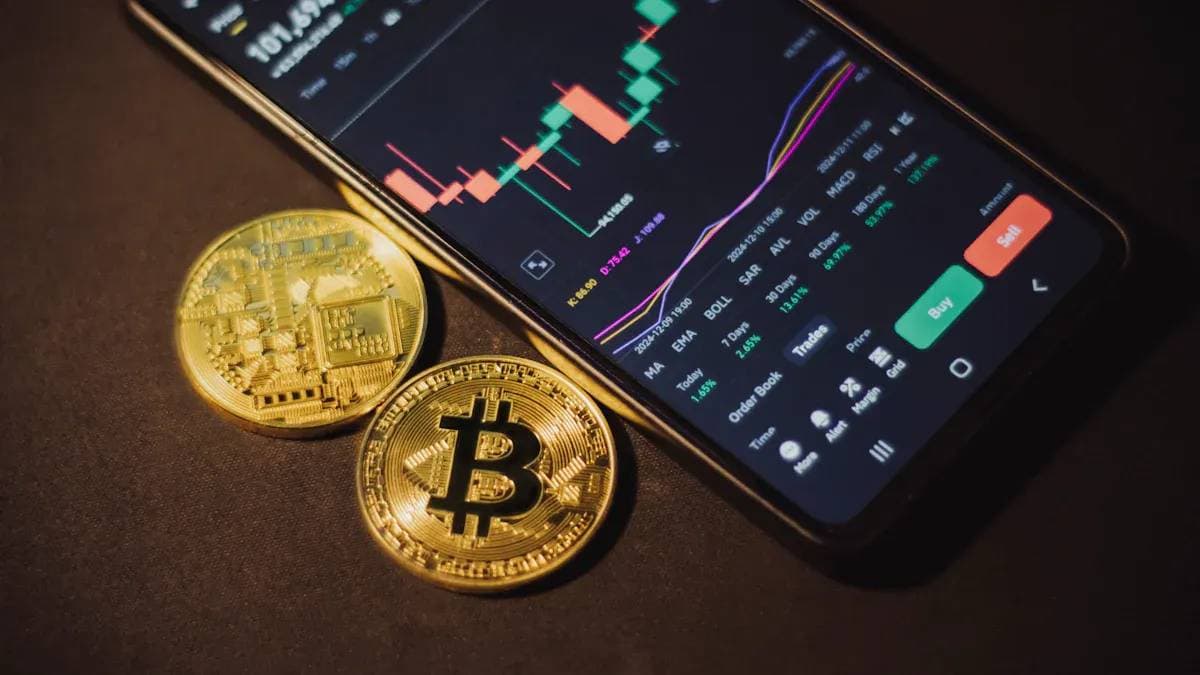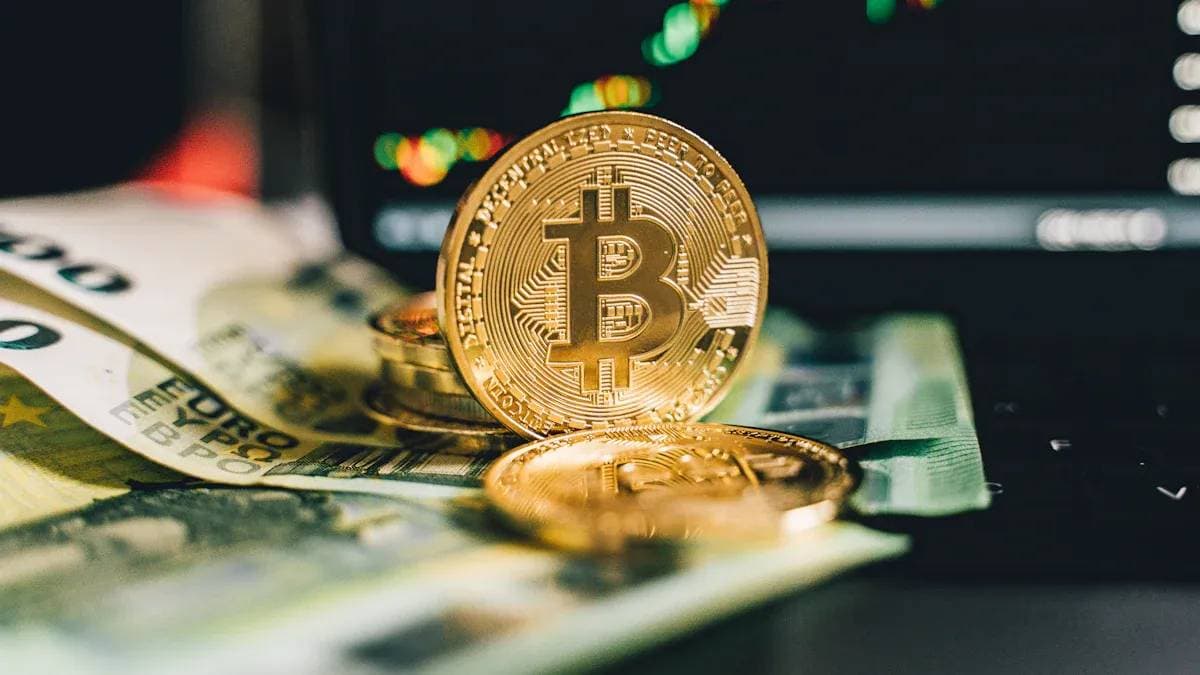- EasyCard
- Trade
- Help
- Announcement
- Academy
- SWIFT Code
- Iban Number
- Referral
- Customer Service
- Blog
- Creator
How to Choose the Best Stablecoin Remittance Solution: 2025 Pitfall Avoidance Guide

Image Source: pexels
Your international remittance costs can be reduced by 90%, while speed increases by hundreds of times. This is the transformation brought by stablecoin remittances. Choosing the best solution requires careful evaluation.
Surveys show that up to 59% of users rank fund security as their top concern.
Therefore, you must comprehensively examine security, cost, speed, compliance, and ease of use. This stablecoin solution guide will provide a clear decision-making framework to help you make informed choices in 2025.
Key Takeaways
- When choosing a stablecoin remittance solution, security is most important. Check if the stablecoin has sufficient reserves and if the remittance platform is secure.
- Stablecoin remittances can save a lot of money, but beware of hidden fees. Compare transaction fees on different blockchain networks and platform service fees.
- Stablecoin remittances are fast, but actual arrival time is affected by blockchain network and platform processing speed. Choosing fast networks and efficient platforms is crucial.
- Compliance is the foundation of long-term security. Choose platforms with licenses that follow KYC and AML rules to ensure fund safety.
- There is no best remittance solution, only the one most suitable for you. Use a scoring table to evaluate different platforms and find the one that best meets your needs.
Security Assessment: Safeguarding Your Fund Lifeline
Fund security is the cornerstone of stablecoin remittances. Any cost or speed advantage pales in the face of potential fund loss. You must systematically evaluate security from both the stablecoin itself and the remittance platform.
Stablecoin Reliability: Verifying Reserves and Transparency
A reliable stablecoin must have its value backed 1:1 by real assets. You need to verify its reserve composition and transparency. Leading stablecoin issuers regularly publish reserve attestation reports.
- USDC (Circle): Known for high transparency. It discloses reserve holdings weekly and receives monthly third-party attestations from top audit firms.
- USDT (Tether): As the largest market share stablecoin, its reserves are increasingly transparent.
The following table briefly compares mainstream stablecoins’ reserve strategies:
| Stablecoin | Main Reserve Assets (as of early 2025) | Features |
|---|---|---|
| USDC | Cash and short-term US Treasuries | Conservative strategy, high liquidity |
| USDT | Primarily US Treasuries, supplemented by gold, Bitcoin, etc. | Diversified assets, holds large amounts of US Treasuries |
The chart below shows USDT’s detailed reserve composition as of March 2025, with cash and equivalents (mainly US Treasuries) dominating.
Choosing stablecoins with clear reserves that undergo regular audits is the first step in securing your funds.
Remittance Platform Security: Reviewing Technical Architecture and Audit Reports
Secure stablecoins need to be remitted through secure platforms. The platform you choose must have robust technical security measures. Be sure to check if the platform has undergone smart contract audits and security assessments by reputable third-party firms. Look for audit reports from companies like QuillAudits or platforms using Flagright for transaction monitoring, which can significantly reduce your fund risks.
Real Security Incident Reviews: Learning from Past Cases
History is the best teacher. The crypto world has seen stablecoin de-pegging, exchange hacks, and other security incidents. These events repeatedly warn us not to trust unproven projects lightly.
Pitfall Avoidance Tip: Stay away from emerging stablecoin projects promising ultra-high returns with opaque reserves or no audits. For platform selection, prioritize those with long operational history, large user bases, and good security records. A platform’s reputation is a key reflection of its security.
Cost Structure Analysis: Reject Any Hidden Fees

Image Source: pexels
The claim of “90% cost reduction” is not empty talk, but only if you can identify and avoid all potential fees. Stablecoin remittance costs mainly consist of on-chain transaction fees and platform service fees. Fully understanding these fees is key to achieving low-cost remittances.
Transaction Gas Fees and Platform Service Fees
Gas fees are what you pay to network miners or validators for processing transactions on the blockchain. This fee varies greatly depending on the chosen blockchain network and is highly volatile.
You need to focus on cost differences across public chains. For example, Ethereum, as the most mainstream smart contract platform, has relatively high transaction costs. Data shows that as of mid-2025, Ethereum’s average Gas fee is about 1.85 USD, with higher fees during network congestion. In contrast, you can choose lower-cost chains like Tron or Stellar, where single-transaction costs are usually below 0.01 USD.
The chart below visually shows the huge difference and volatility in fees between Ethereum (ETH) and Tron networks.
Besides Gas fees, some remittance platforms also charge fixed percentage or amount service fees. You must consider both when choosing.
Exchange Rate Spreads and Transaction Slippage
Exchange rate spreads and transaction slippage are two other common “hidden costs.”
- Exchange rate spread: The difference between the platform’s buy and sell prices.
- Transaction slippage: The difference between the price when you place an order and the final execution price, especially noticeable in large transactions or during high market volatility.
Cost Control Techniques: Choose high-liquidity, reputable large trading platforms. These platforms typically offer better exchange rates and lower slippage, helping you lock in costs.
Cost Comparison: Differences Across Stablecoins and Public Chains
Compared to the global average of 6.62% for traditional remittances, stablecoin remittance total costs are usually between 0.5% and 3%, saving you up to 90%-95% in fees. Choosing the right stablecoin and public chain combination can further reduce your costs.
Let’s compare through a $1,000 remittance example:
| Remittance Method | Estimated Fees (USD) | Cost Breakdown |
|---|---|---|
| Traditional Bank (SWIFT) | $25 - $50 | Telegraph fee + intermediary bank fee + exchange rate spread |
| USDT (Ethereum network) | $2.5 - $7 | Gas fee (about $1.85) + platform fee + exchange rate spread |
| USDT (Tron network) | $1 - $3 | Gas fee (about $1.3) + platform fee + exchange rate spread |
As shown in the table, using USDT on the Tron network saves more than on Ethereum. This fully illustrates the importance of carefully researching and selecting the optimal public chain before remitting.
Speed and Efficiency Verification: Say Goodbye to Long Waits
The days-long waits of traditional remittances are a thing of the past. Stablecoin remittances leverage blockchain technology to achieve near-instant value transfer. Research from the Bank for International Settlements (BIS) confirms that stablecoin payments can improve time efficiency by over 100 times. However, final arrival speed is not determined by a single factor; it depends on the dual efficiency of the blockchain network and the remittance platform.
Blockchain Network Confirmation Speed
Your transaction needs to be validated and recorded on the blockchain; this process time is the “block confirmation time.” Different blockchain networks have vastly different processing speeds. The network you choose directly determines the baseline speed of your remittance.
The table below compares average block confirmation times for several mainstream public chains:
| Blockchain | Average Block Confirmation Time (2025) | Features |
|---|---|---|
| Solana | About 400 milliseconds | Extremely fast, designed for high-frequency trading |
| Tron | About 3 seconds | Fast speed, extremely low transfer costs |
| Ethereum | About 12 seconds | High security, most mature ecosystem |
Choosing high-speed networks like Solana or Tron can win valuable initial time for your remittance.
Platform Deposit/Withdrawal Processing Efficiency
Fast block confirmation does not mean funds arrive immediately. For security reasons, remittance platforms require transactions to reach a certain “confirmation count” before crediting funds to your account. This requirement varies by platform and blockchain.
Platforms typically set fewer confirmations for higher-security networks (like Bitcoin) and more for others. For example, a transaction on Ethereum may need 30 confirmations, while only 6 on higher-security networks. Additionally, large transactions usually require more confirmations to be finally settled by the platform. Therefore, you need to understand the platform’s specific confirmation requirements for different chains and amounts.
Network Congestion Impact and Coping Strategies
Like highways during peak hours, blockchain networks experience congestion during high transaction volumes. Network congestion can extend confirmation times and spike Gas fees.
Efficiency Improvement Techniques: To handle network congestion, prioritize platforms supporting Layer 2 solutions. Layer 2 technologies, such as Rollups, batch hundreds or thousands of transactions into one and submit to the main chain. This is like creating a “bus rapid transit lane,” achieving near-second-level confirmations at minimal cost, completely eliminating congestion worries.
Compliance Review: Ensuring Long-Term Stability and Security

Image Source: pexels
In the rapidly changing crypto world, compliance is your long-term fund shield. A platform’s compliance level directly determines its operational stability and your asset security. You must make compliance review a key step in choosing a solution.
Query Platform Operating Licenses and Regulatory Status
A compliant platform must be legally registered in specific jurisdictions and hold corresponding licenses. This means it is supervised by government agencies and must follow strict operational standards.
Professional Tip: Before choosing a platform, check its official website or public materials for operating license information, such as the US MSB (Money Services Business) license or Europe’s Crypto Asset Service Provider (CASP) license. This effectively filters out many high-risk illegal platforms.
KYC and AML Process Evaluation
You will find that all legitimate platforms require you to complete KYC (Know Your Customer) and AML (Anti-Money Laundering) processes. This is the identity verification program platforms must execute to prevent financial crimes and comply with laws. A sound KYC process is a key indicator of platform compliance.
Typically, platforms require different levels of personal information based on the features you need. Basic verification may only need name and address, while for large transactions, you need to prepare:
- Full name and date of birth
- Detailed residential address
- Government-issued photo ID (e.g., passport, driver’s license)
- Biometric verification (e.g., selfie photo or short video)
2025 Global Regulatory Trend Predictions
In 2025, global stablecoin regulatory frameworks are becoming increasingly clear. You need to follow these trends as they relate to the long-term stability of the services you use.
Europe’s MiCA (Markets in Crypto-Assets) regulation is in effect, setting clear rules for stablecoins, requiring issuers to hold 1:1 liquid asset reserves and banning unbacked algorithmic stablecoins. In the US, the GENIUS Act signed in 2025 establishes the first federal regulatory framework for payment stablecoins. Meanwhile, Hong Kong has launched a new stablecoin issuer licensing system, strengthening market oversight.
The implementation of these regulations and the growing support for stablecoins by major international payment companies indicate stablecoins are gradually going mainstream. Choosing platforms that actively embrace regulation and proactively apply for licenses is a wise move to ensure your remittance solution’s long-term safety and reliability.
Final Selection: Your Personalized Stablecoin Solution Guide
After comprehensive analysis of security, cost, speed, and compliance, you have reached the final step: making a choice. There is no absolute “best” solution in the market, only the one “most suitable for you.” This section provides a decision-making tool and market insights, forming the final chapter of this stablecoin solution guide to help you build a remittance strategy fully tailored to your needs.
Comprehensive Evaluation Checklist: Quantifiable Decision Tool
Relying on intuition or single recommendations to choose a platform is dangerous. You need an objective, quantifiable method to evaluate options. Weighted scoring models are such a powerful decision technique. It assigns different weights to each criterion you value, helping you make unbiased, data-driven decisions.
You can follow these five steps to create your own evaluation checklist:
- Define evaluation criteria: First, list all factors you care about most. For example: security, total cost, arrival speed, ease of use, customer service quality.
- Assign weights to criteria: Based on your personal priorities, assign a percentage weight to each criterion, ensuring the total is 100%. If you care most about fund security, give it the highest weight.
For example, a risk-averse user’s weight allocation might be: Security (40%), Total Cost (25%), Compliance (25%), Speed and Ease of Use (10%).
- Score platforms: For each candidate platform, score it (e.g., 1-10, 10 being best) under each criterion based on information collected.
- Calculate weighted scores: Multiply each criterion’s score by its corresponding weight, then sum all weighted scores to get each platform’s final total.
- Compare and decide: The platform with the highest total score is theoretically the best choice for your personal needs.
The table below is a simplified calculation example:
| Evaluation Criterion | Weight | Platform A Score (1-10) | Platform A Weighted Score | Platform B Score (1-10) | Platform B Weighted Score |
|---|---|---|---|---|---|
| Security | 40% | 9 | 3.6 | 7 | 2.8 |
| Total Cost | 30% | 7 | 2.1 | 9 | 2.7 |
| Speed | 20% | 8 | 1.6 | 8 | 1.6 |
| Ease of Use | 10% | 9 | 0.9 | 6 | 0.6 |
| Total | 100% | 8.2 | 7.7 |
Notably, excellent platforms themselves use more complex risk assessment models to protect users. They employ dynamic behavioral analysis, continuously monitoring your transaction patterns (e.g., frequency, amount) to identify anomalies. For example, if you usually send 5 transactions weekly averaging $500, a sudden 20 transactions of $5,000 would trigger an alert. This “permanent KYC” real-time risk analysis capability is a key indicator of a platform’s security maturity.
2025 Remittance Platforms Worth Watching
With the evaluation method mastered, let’s look at some noteworthy platforms in the 2025 market. They have different focuses to meet specific user needs. This review is an excellent starting point for practicing the above evaluation method and the core reference of this stablecoin solution guide.
- Biyapay: Comprehensive all-in-one choice Biyapay offers great convenience for users needing one-stop solutions. It not only supports sending and receiving USDT and USDC on multiple mainstream public chains (like Tron, Ethereum) but also integrates virtual card services. This means you can directly use received stablecoins for online spending or withdraw cash at supported ATMs, greatly simplifying the cash-out process. For users wanting to seamlessly combine stablecoin remittances with daily spending, Biyapay is a very powerful and user-friendly choice.
- MoneyGram Ramps: Global cash deposit/withdrawal expert If you or your recipient heavily rely on cash, MoneyGram’s Ramps service in partnership with the Stellar network is ideal. It leverages MoneyGram’s vast global offline network to bridge cash and on-chain USDC, allowing users to easily exchange fiat for USDC at designated locations or cash out USDC.
- Strike: Lightning Network pioneer focused on the US market Strike mainly serves US users, using the Bitcoin Lightning Network for value transfer to achieve instant, low-cost remittances from the US to Africa, Asia, Latin America, and other regions. It combines fiat usability with Bitcoin rail efficiency, especially suitable for outbound remittances from the US.
- Bitso Business: Latin America B2B remittance giant For enterprises needing large or commercial remittances to Latin America (especially Mexico, Brazil, Argentina), Bitso Business is the market leader. It focuses on handling large fund flows between USD and local currencies, combining stablecoin rails and local payment networks for excellent liquidity and processing speed.
| Platform | Core Advantages | Best Use Cases | Supported Main Stablecoins |
|---|---|---|---|
| Biyapay | Comprehensive features, integrated virtual cards, convenient deposit/withdrawal | Daily remittances, online spending, personal users needing integrated financial services | USDT, USDC |
| MoneyGram Ramps | Global cash deposit/withdrawal network | Cross-border remittances needing cash withdrawal options for recipients | USDC |
| Strike | Lightning Network-based, fast speed, low cost | Small, high-frequency remittances from the US to specific global regions | (via BTC network) |
| Bitso Business | Deep liquidity in Latin America | Enterprise users for B2B payments to Mexico, Brazil, etc. | Multiple stablecoins |
Common Newbie Traps and Pitfall Avoidance Summary
As you embark on your stablecoin remittance journey, be vigilant about the following common traps. Avoiding them will make your experience safer and smoother. This pitfall avoidance summary is your final safety check when practicing this stablecoin solution guide.
Newbie Pitfall Avoidance Checklist
- Wrong network selection: This is the most common and costly error. Before transferring, confirm the recipient’s address exactly matches the chosen blockchain network (e.g., TRC-20, ERC-20). Wrong network may cause permanent fund loss.
- Ignoring total cost: Do not just look at the platform’s advertised low service fees. You must calculate Gas fees, platform service fees, possible exchange rate spreads, and the final “cash-out” fees when converting stablecoins to fiat.
- Believing unrealistic high-yield promises: Beware of any platform or stablecoin project promising unrealistic returns. In crypto, high yields almost always come with high risks.
- Using unaudited platforms: Never deposit funds into platforms without audits from reputable security firms. A public audit report is the platform’s commitment to technical security.
- Address copy-paste errors: Before sending transactions, develop the habit of double-checking the recipient address multiple times. Best to manually verify the first and last few characters to prevent clipboard tampering by malware.
To choose the best solution, follow the five-step method: security as the foundation, cost as the scale, speed as the key, compliance as the bottom line, and make a comprehensive decision. Stablecoin remittances are becoming a powerful supplement to traditional systems like SWIFT. With the remittance market expected to approach nearly $1 trillion in 2026, stablecoins, with their speed and cost advantages, will play an increasingly important role. Make good use of the evaluation checklist in this stablecoin solution guide to find your safest, most efficient, and economical personalized choice.
FAQ
How do I convert received stablecoins to cash?
You can sell stablecoins on compliant trading platforms. Then, withdraw the obtained funds to your bank account, such as a Hong Kong licensed bank account. Some platforms also offer virtual card services supporting direct spending.
What if I send stablecoins to the wrong address?
Warning: Blockchain transactions are usually irreversible.
If you send to the wrong address or choose the wrong network (e.g., confusing TRC-20 with ERC-20), funds are very likely permanently lost. Therefore, double-check the address before any transaction.
Is using stablecoin remittances legal?
The compliance of stablecoin remittances depends on the laws of your location and the recipient’s. You are responsible for understanding and complying with local regulations. Choosing platforms with legitimate licenses (e.g., US MSB) is an important step to ensure compliant operations.
Do I need to pay taxes on stablecoin remittances?
When converting stablecoins to fiat currency, the resulting gains may be considered capital gains and subject to tax. Specific tax policies vary by jurisdiction. We recommend consulting a professional tax advisor for accurate information.
*This article is provided for general information purposes and does not constitute legal, tax or other professional advice from BiyaPay or its subsidiaries and its affiliates, and it is not intended as a substitute for obtaining advice from a financial advisor or any other professional.
We make no representations, warranties or warranties, express or implied, as to the accuracy, completeness or timeliness of the contents of this publication.




Contact Us
Company and Team
BiyaPay Products
Customer Services
BIYA GLOBAL LLC is a licensed entity registered with the U.S. Securities and Exchange Commission (SEC No.: 802-127417); a certified member of the Financial Industry Regulatory Authority (FINRA) (Central Registration Depository CRD No.: 325027); regulated by the Financial Industry Regulatory Authority (FINRA) and the U.S. Securities and Exchange Commission (SEC).
BIYA GLOBAL LLC is registered with the Financial Crimes Enforcement Network (FinCEN), an agency under the U.S. Department of the Treasury, as a Money Services Business (MSB), with registration number 31000218637349, and regulated by the Financial Crimes Enforcement Network (FinCEN).
BIYA GLOBAL LIMITED is a registered Financial Service Provider (FSP) in New Zealand, with registration number FSP1007221, and is also a registered member of the Financial Services Complaints Limited (FSCL), an independent dispute resolution scheme in New Zealand.




















